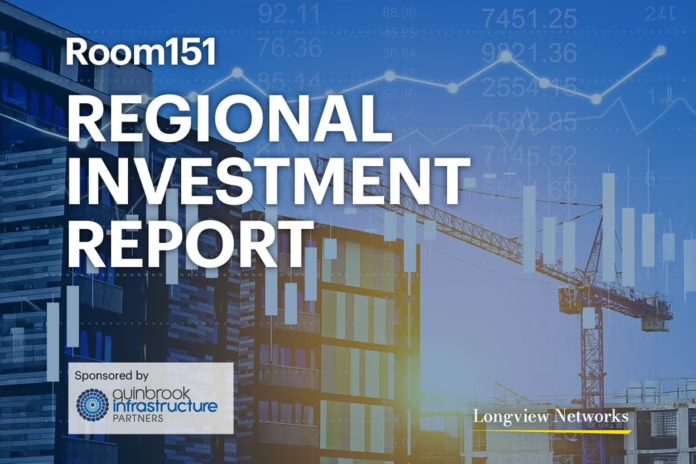Partner Content: Adrian d’Enrico, fund manager at Edmond de Rothschild (EdRAM) sets out the investment case for affordable housing.
What are the roots of the current housing crisis in the UK?
We simply haven’t built enough homes. We need more of the right homes in the right places to house people. We need to build more – and fast. There are currently over 120,000 children who won’t sleep in their own bed tonight.
There are also over 100,000 households in temporary accommodation, which is the highest figure for nearly 20 years. There are 1.2 million households on local authority waiting lists in England alone – that’s the population of Manchester, Liverpool and Cardiff combined. Everywhere you look there’s a worrying headline and the numbers are getting bigger.
What role can patient capital play in mitigating the crisis?
Patient capital can play a vital role here because of its strong alignment with what the sector offers. LGPS investors are looking for assets of a long-term nature, which offer inflation-linked income – the sector delivers on both.
Moreover, with the Department for Levelling Up, Housing and Communities (DLUHC) pushing for a minimum LGPS allocation of 5% in impact investments, what is more ideal than building affordable homes? Doing it in ‘their own back yard’ has a wonderful circularity for scheme members too.

What does your affordable housing portfolio look like?
We only invest directly in residential property. The important thing for us is additionality. We don’t want to be taking existing stock from the general housing market and using it for affordable housing – we want to be creating new opportunities, and expanding supply.
We typically forward fund developments, building out schemes over 24 to 36 months. We have 768 homes across 10 projects, nine of which are brand new developments out of the ground. The other one was a refurbishment of an old office building, which is now a homeless project. We have our own housing association, so that lets us secure Section 106 planning opportunities and also grant funding, which helps us deliver genuinely affordable homes. We source stock from a number of parties, including other housing associations and private developers looking for a wholesale exit from schemes. By participating in the development, we can ensure what is provided is suitable for the local area: what residents need, what local authorities need and what housing teams need. It also means we can step in and help to shape the quality and efficiency of what is provided, supporting long-term value for our investors and benefiting our residents.
Do you mainly work with the funds, or also with the pools?
A bit of both. We had an LGPS investor, Strathclyde, commit to the fund at the end of last year directly, but there are varying approaches by pension schemes across the country and we are flexible and willing to create something that works for all parties.
Some LGPS schemes are looking to do something direct and local in their area, for example, so we are working with a few parties to create portfolios that can deliver in their own footprints. Meanwhile, some of the pools are looking for investment partners to deliver their pooling strategies, so we’re talking to them too.
Sourcing suitable assets can be a challenge. What are the factors limiting traditional development pipelines?
There’s always stock, despite the complexities of the planning process and government tinkering with housing policy – the sector is capital constrained, not opportunity constrained. At present, there are actually a few more options. Some developers are worried about private rent and sales exits, so are looking to affordable providers for a wholesale disposal. And with increasing financial pressures, housing associations have scaled back their development pipelines – so it’s a perfect opportunity for long-term capital, like that from LGPS, to establish a foothold and be seen as a credible contributor to a solution to address the housing crisis.
How do you navigate that as an investor?
By working with an established partner – there’s a healthy scepticism in the sector about new entrants. There’s a tacit agreement that pension fund capital can (and will) enter the sector, but the involvement of non-traditional investment vehicles can cause concern. Investors need to find investment managers who appreciate the nuances of the space and have their own housing association or sufficient experience to be considered ‘in the sector’ – it’s built on trust and doing the right thing. You can’t shortcut that.
Much has been made of the risks of a property market correction in the UK. Could affordable housing be affected by that?
The market is resilient – there has been some minor pricing adjustment, but the quantum has been far more limited than commercial sectors. The market is characterised by long-term holders of housing stock, and little is traded.
Occupational dynamics haven’t changed, rents remain aligned to inflation, so that helps maintain the status quo. That’s why there hasn’t been a huge correction and there’s also a weight of money trying to access the sector – including new market entrants. Combine it all and the resilience relative to other sectors makes sense.
________________________________________________________________________________________________
Room151’s LGPS Private Markets Forum
21st June, 2023, London FREE for LGPS Practitioners
_____________________________________________________________________________
How does affordable housing differ from other segments of the real estate market?
It acts as an important diversifier which has very limited correlation to cyclical, economically-led sectors. Affordable housing is driven by demographics – they’re slow moving, dependable and have clear directions of travel. We know we’ll have more people; we know they’ll get older, we know we’ll need more homes of different types to house them as their needs change. The sector has remarkably low vacancy rates – 1-2%, compared to commercial real estate at 7% – which evidences the robust occupier market.
Affordable housing is not too exciting when the broader real estate market is thriving, but it’s robust in the weaker times – it’s a useful diversifier and a defensive base for real estate allocations. Take Covid-19 as an example – while other sectors were worrying about occupier strength, rent holidays and re-gearing leases, in affordable housing we collected all of our rents, in full and on time.
To what extent does affordable housing act as an inflation hedge for a portfolio?
The sector is characterised by inflation-linked rents – across all tenures, typically seeing rents linked to CPI or CPI+1% uplifts. So it’s really useful for investors. Rent increases are currently capped at 7% for one year from April 2023, so marginally behind where inflation currently sits, but that’s still favourable compared to other long-income real estate, which typically has reviews capped at 5% or lower throughout the lease.

Do you measure the outcomes of your investments on an ongoing basis?
Our fund is Article 9 under EU SFDR taxonomy. We deliver on 7 of 17 UN Sustainable Development Goals. They’re labels – one’s we’re proud of – but we prefer to focus on the impact for residents. We work with The Good Economy to assess social impact based on a number of factors – even before we assess the financial and property characteristics of a deal, we look at its potential impact. An external verification and validation of that potential impact is central to our investment approval process.
We also produce an annual impact report, published publicly on our website. It holds us to account. Impact isn’t something you just measure after the event, it needs to be embedded in what you do and how you operate. We try and live by that so that our residents can better enjoy living in their homes.
What are the governance risks when it comes to investing in affordable housing?
This is a highly regulated sector with ever increasing consumer standards, which is exactly the way it should be. This means it comes with additional administration tasks and some additional cost. But this helps maintain the standards and quality that the majority of the sector have been delivering for decades. It also protects investors by providing greater stability.
Investments in affordable housing are generally a long-term commitment. You distinguish between long income and long leases. Why do you draw that distinction?
The affordable housing sector has some elements that have faced challenges – homelessness and specialised supported housing to name two. Here, investors were acquiring assets with long-term leases, theoretically offering secure, inflation-linked rents. For a variety of reasons, these arrangements haven’t worked. The counterparties to those leases haven’t been able to pay them.
Investors have seen values eroded to just the assets themselves. In effect investors bought return-free risk. But if you invest in the right homes, in the right place that will attract and retain residents for the long term, you will get long income. In a sector facing such a demand-supply imbalance, you shouldn’t need to rely on a long lease. If you build it, you’ll fill it.
Finally, what are the long-term opportunities for investors?
It’s a scale opportunity and it isn’t limited. There is a multi-billion, multi-decade requirement for capital. There are lots of different strategies trying to crack the same the nut but that’s great – nobody is going to solve the housing crisis on their own. The sector is facing a huge challenge, but it’s a huge opportunity that can deliver on three fronts for investors. It offers long-term, dependable income, inflation-linked returns and an opportunity for impact investment. It’s a win-win-win and investors should be actively considering an allocation.












